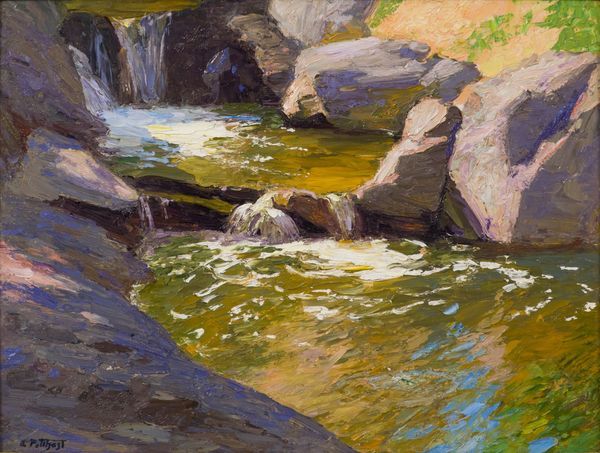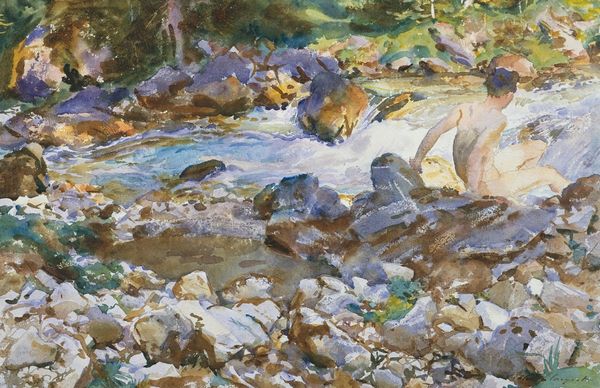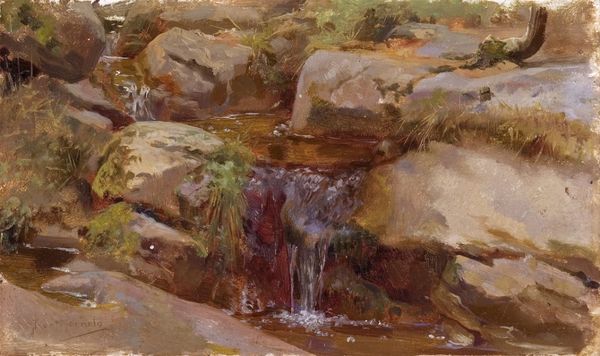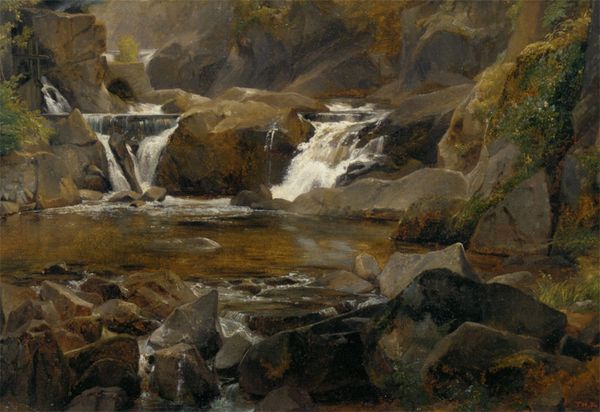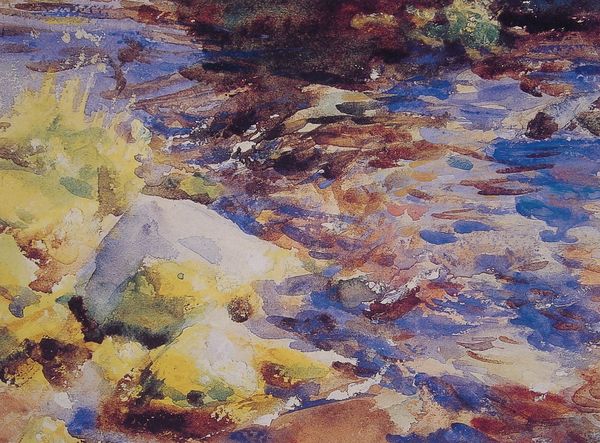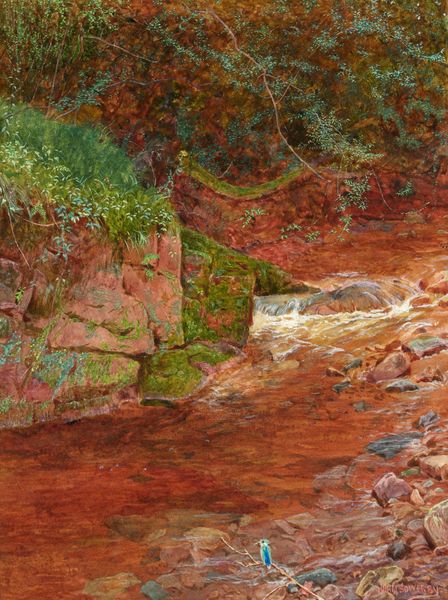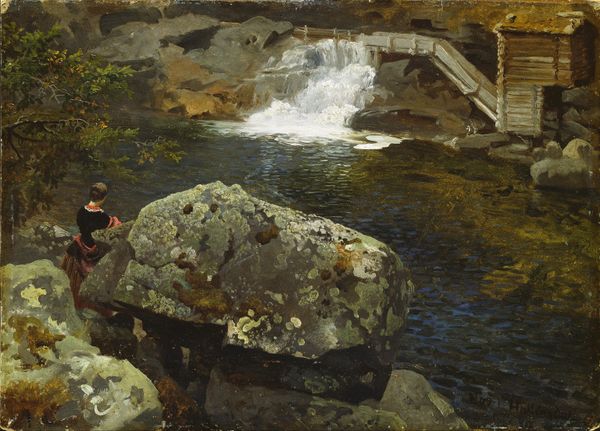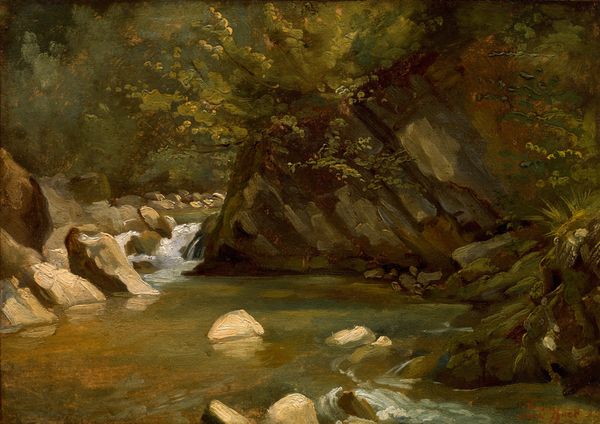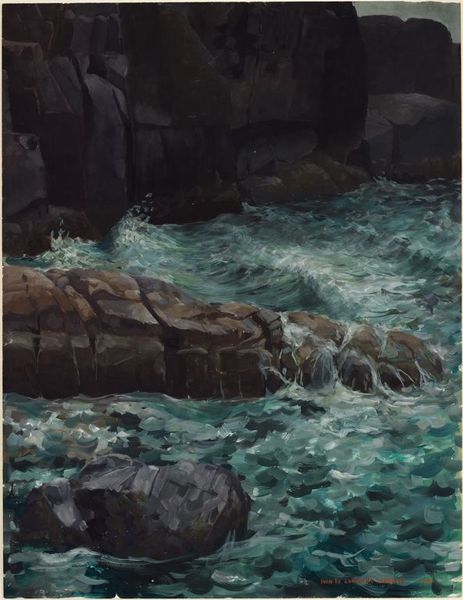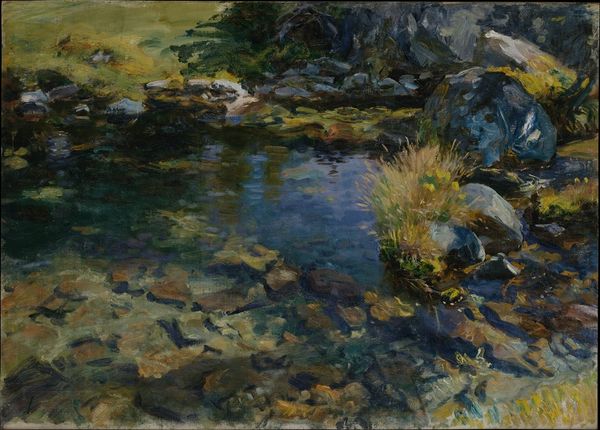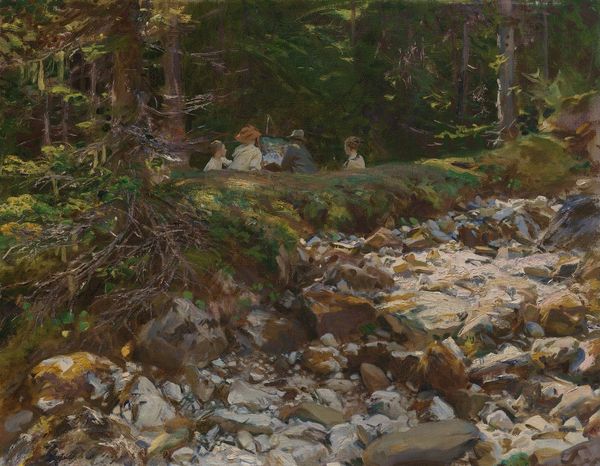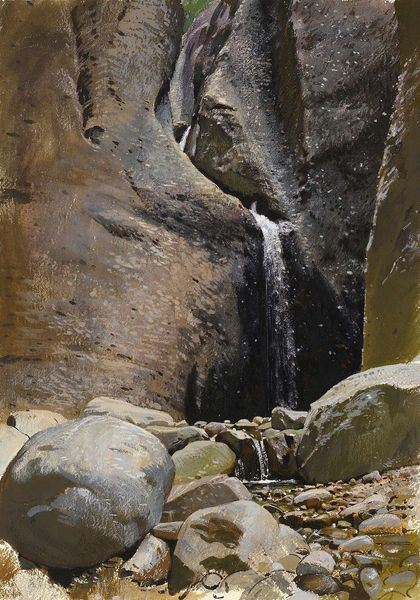
Copyright: Public domain
Editor: This is "Kotakoski," a 1932 oil painting by Pekka Halonen. It's quite a serene landscape, but there's a definite emphasis on the materiality of the rocks and water. How do you interpret this work? Curator: I see a meditation on labor and resources. Look at the paint application: thick in areas, mimicking the rough texture of the rocks; thinner where the water flows. It speaks to a consciousness of the physical process, doesn’t it? The means by which the landscape is consumed through painting itself becomes the subject. What role might the consumption of raw materials, like pigment and canvas, have played in Halonen’s conceptualization of nature? Editor: That’s a fascinating perspective. I hadn't considered the sheer volume of materials needed. How does that connect to the social context of the time? Curator: Think about industrialization's encroachment on nature in the early 20th century. Paintings like this romanticize and perhaps even mourn what's being lost to resource extraction and industrial progress. Even plein-air painting itself is reliant on readily available paints manufactured industrially and easily portable canvases, both of which extract and transform material resources from the environment, isn’t it? Is Halonen critiquing or celebrating? Or simply documenting this changing relationship between humanity and nature? Editor: So, the painting isn't just about the river; it’s about our relationship with the river as a resource. Curator: Precisely! And it invites us to consider the labor and material transformations that go into producing not only art, but our entire experience of nature. Editor: I’ll never look at a landscape painting the same way again! That's so much deeper than I expected. Curator: It’s all about unveiling the layers of material reality that underpin even the most seemingly innocent depictions.
Comments
No comments
Be the first to comment and join the conversation on the ultimate creative platform.
